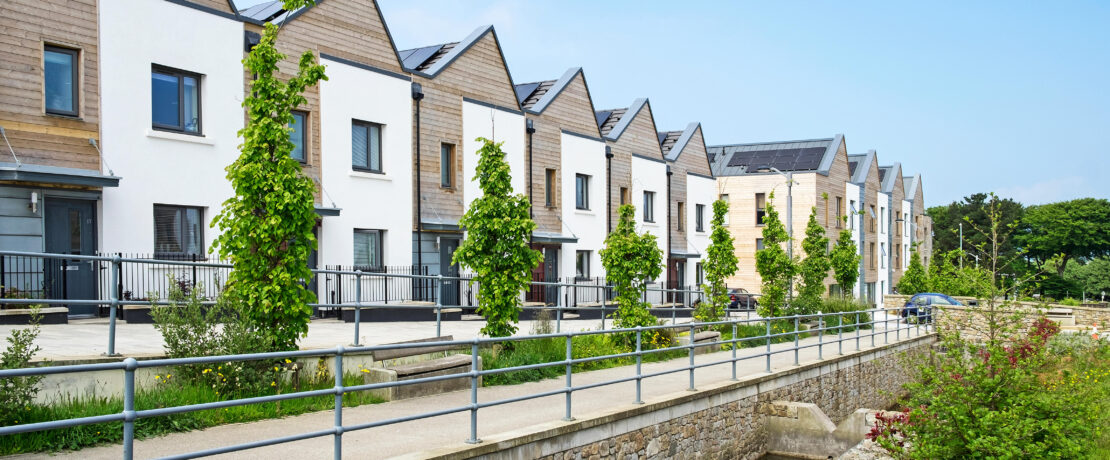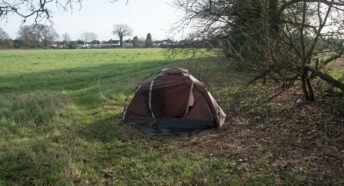Our report: Housing crisis poses threat to survival of rural communities
An affordable, healthy home is the foundation for a decent life. But our new report shows that rural communities in England are facing an existential threat from an acute and overlooked shortage of genuinely affordable housing.
The report, entitled ‘Unraveling a crisis: the state of rural affordable housing in England’, launched today and lays bare the impact of this crisis on real people, along with what is needed to fix it.
‘Chronic shortage’ of affordable housing
A chronic shortage of genuinely affordable housing is creating huge social housing waiting lists and forcing people out of the communities they know and love. This worrying crisis is being fed by record house prices, stagnating wages and an increasing number of second homes and short term lets.
The countryside, where levels of homelessness have leapt 40% in just five years, is being drained of skills, economic activity and vital public services.
There is an extreme disparity between rural house prices, which are higher than those in other parts of the country, and rural wages, which are much lower. House prices in the countryside increased at close to twice the rate of those in urban areas in the five years to 2022. While the average cost of a home jumped 29% and is now £419,000, rural earnings increased by just 19% to a total of £25,600.
89-year waiting lists
More than 300,000 people are on waiting lists for social rented housing in rural England, an increase of over 10% since 2018. At the current rate of construction, it would take 89 years to offer a home to everyone on the waiting list. Current planning policies allow for the building of new ‘affordable’ housing costing anything up to 80% of market value. This means that in many rural areas the ‘affordable homes’ being provided are often anything but.
Local authorities have not replaced social housing at the rate properties have been sold under the Right to Buy policy, leading to a chronic shortage of housing for people who need it most.
Damaging short-term lets and second homes
In Cornwall, where more than 15,000 families are on social housing waiting lists, the number of properties for short-term let, (at much higher prices than social rents), grew by 661% in the five years to 2021. Half of the families on social housing waiting lists in South Lakeland could be accommodated in local properties available exclusively as holiday rentals. Devon has seen 4,000 homes taken off the private rental market and 11,000 new short-term listings since 2016.
The government has legal powers to protect council housing purchased under the Right to Buy scheme from being sold off at market rates or as second homes. Our research is the first published study to look at the overall coverage of these so-called ‘Section 157’ powers.
We found that these powers only apply to half of all rural parishes in England. They exclude whole counties such as Bedfordshire and Cambridgeshire, and also large towns. There are several large towns, particularly in south west England, where there is a particular lack of affordable housing.
‘Decades of inaction’
CPRE’s Chief Executive Roger Mortlock said:
‘Decades of inaction have led to an affordable housing crisis that is ripping the soul from our rural communities. Solutions do exist and the next government must set and deliver ambitious targets for new, genuinely affordable and social rented rural housing, curbing the boom of second homes and short-term lets.
‘Record house prices and huge waiting lists for social housing are driving people out of rural communities, contributing to soaring levels of often hidden rural homelessness. We need urgent change to ensure we don’t end up with rural communities that are pricing out the very people needed to keep them vibrant.’
Urgent recommendations
The report contains a list of recommendations that CPRE believes will help to solve the severe housing crisis in the countryside. It includes calls for the government to:
- Redefine ‘affordable housing’ to directly link to average local incomes
- Increase the minimum amount of genuinely affordable housing required by national planning policy and implement ambitious targets for the construction of social rented homes.
- Support local communities to deliver small-scale developments of genuinely affordable housing and make it easier for councils to purchase land at reasonable prices, enabling the construction of social housing and vital infrastructure.
- Introduce a register of second homes and short-term lets, with new powers for local authorities to levy additional council tax on second homes.
- Extend restrictions on the resale of ‘affordable housing’ to all parishes with fewer than 3,000 inhabitants to ensure local workers can continue to use properties, rather then allowing them to become second homes or holiday lets.
Read the full report
Read our 2023 affordable housing report here. We’ve also created a jargon-busting explainer, to help readers interpret the report and understand some of the key policy mechanisms.







